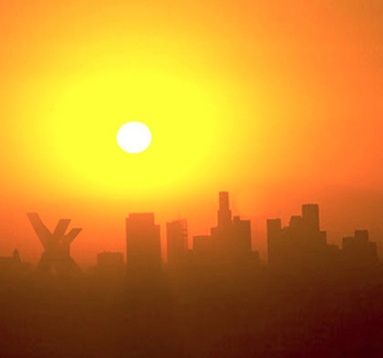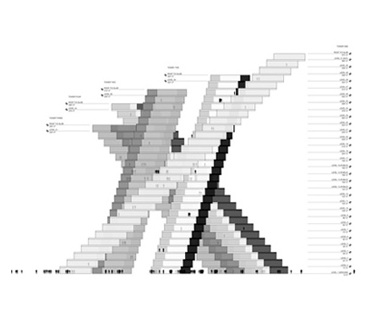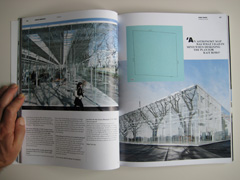
Dynamic Architecture's Dynamic Tower, Dubai

Rad Nature's Sunshine Tower, Los Angeles
There is no question that iconic design plays a significant role in the architecture discipline these days. Countless cities around the world are amassing billions of dollars for the design and construction of buildings that function first and foremost as representations of high-profile, sought-after identities. For the most part, these iconic buildings disregard energy issues, because they affect the bottom-line. Contrary to this convention, however, a number architecture firms are now incorporating energy issues into the design of iconic structures. This means for example that the energy used to run the building is carbon-neutral with the help of so-called carbon credits, or that movement sensors are installed to automatically turn of lights. Even names like Hadid and Van Berkel are being associated with sustainable design (see our
previous pos
t by Chu-ism). These examples are somewhat limited, but in a couple of cases the influence of energy has engendered unique, never-before-seen architecture. For the least likely of cities, Dubai and Los Angeles,
Dynamic Architecture and
Rad Nature Architecture Office have proposed buildings that are both iconic shapes and high-tech power plants.
Dynamic Architecture, headed by an elderly Israeli architect, is finalizing building permits for its Dynamic Tower in Dubai, UAE. Like other Dubai towers, its shape shouts for attention. The tower is made up of prefabricated floors that spin around a central utilities core, making the effect of a spiraling, glistening form. The firm argues that nearly every aspect of the structure is groundbreaking (
see for yourself), from the prefabrication to the level of luxury. Let's delve closer into the energy aspects of the tower.
Wind turbines and solar panels are tucked between and above each floor, respectively. The idea is that as the floors rotate, some portion of the solar panels are constantly in direct sunlight. However, one sees that there is only significant sunlight exposure when all the floors are misaligned (see far right on top image). Even in this arrangement, the shadows from upper floors will surely reduce the actual radiation received.
It is planned that a giant wind turbine is sandwiched between each pair of floors, but they are actually absent from the building renderings. As an intermittent source of power, it seems counterproductive to gather kinetic energy from wind only to use that energy to make the building appear to move in the wind. The Dynamic Tower is spinning in circles: green does not meet big.
Rad Nature Architecture Office, founded in New York by Dong Ping Wong, a former architect at REX, proposes that architecture and energy must be considered together. A number of the office's projects stem from the design process that REX is known for: bold and clear diagrams that explain exciting building forms. In Rad Nature's case, these diagrams depict the energy consequences of careful spatial compositions, rather than arranging program blocks.
The Sunshine Tower is a solar power-generating skyscraper. It is an optimistically perverse interpretation of the building type, which is everything but energy-efficient. Rather than raising it's profile vertically, the housing tower is segmented into smaller towers that lean on each other, multiplying the surface exposure for photovoltaics. With PV panels oriented in every direction (even north?), it may be possible to generate enough electricity for the entire tower or even a surplus: green meets big.
The Sunshine Tower prompts us ask more of icons and architecture in general. If even a skyscraper can be energy-productive why can't every other building?
For those interested in low-energy high-rises, I recommend checking out the following, albeit less radical, architecture firms:
And for some less practical ideas:
Upcoming topics: The architectural program and urban waste
-----
Via Jargon, etc.
Personal comment:
Intéressant de voir que le développement durable engendrera également la recherche de formes nouvelles et "marquantes", dans une sorte de longue tradition architecturale.
Et on peut sans conteste imaginer que cela va générer des formes nouvelles (si l'on pense aux "architectures paysages", aux "solar power plant", ou encore à l'urban farming, etc., il y a déjà de nombreuses pistes)












